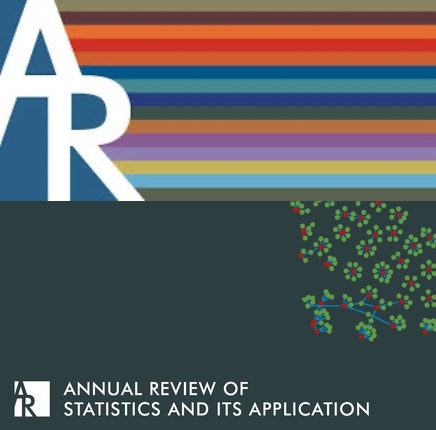传染病建模
IF 8.7
1区 数学
Q1 MATHEMATICS, INTERDISCIPLINARY APPLICATIONS
Annual Review of Statistics and Its Application
Pub Date : 2024-11-12
DOI:10.1146/annurev-statistics-112723-034351
引用次数: 0
摘要
传染病对全球公共卫生构成了持续挑战。最近的全球健康危机,如 COVID-19 大流行和埃博拉疫情,凸显了传染病建模在指导公共卫生政策和应对措施方面的重要作用。传染病建模是社会的重要工具,可为降低风险的措施提供信息,促进及时干预,并帮助医疗保健服务系统做好准备。本文综述了传染病建模的现状,强调了在理解和预测传染病传播过程中统计方法的整合。我们首先考察了历史背景和塑造这一领域的基础模型,如 SIR(易感者、感染者、康复者)和 SEIR(易感者、暴露者、感染者、康复者)模型。随后,我们深入探讨了已出现的方法创新,包括随机建模、基于网络的方法和大数据分析的使用。我们还探讨了机器学习技术在提高模型准确性和响应速度方面的整合。综述指出了参数估计、模型验证和实时数据流整合方面的挑战。此外,我们还讨论了建模所涉及的伦理问题,如隐私问题和风险交流。文章最后讨论了未来的研究方向,强调了数据整合和跨学科合作对推进传染病建模的必要性。本文章由计算机程序翻译,如有差异,请以英文原文为准。
Infectious Disease Modeling
Infectious diseases pose a persistent challenge to public health worldwide. Recent global health crises, such as the COVID-19 pandemic and Ebola outbreaks, have underscored the vital role of infectious disease modeling in guiding public health policy and response. Infectious disease modeling is a critical tool for society, informing risk mitigation measures, prompting timely interventions, and aiding preparedness for healthcare delivery systems. This article synthesizes the current landscape of infectious disease modeling, emphasizing the integration of statistical methods in understanding and predicting the spread of infectious diseases. We begin by examining the historical context and the foundational models that have shaped the field, such as the SIR (susceptible, infectious, recovered) and SEIR (susceptible, exposed, infectious, recovered) models. Subsequently, we delve into the methodological innovations that have arisen, including stochastic modeling, network-based approaches, and the use of big data analytics. We also explore the integration of machine learning techniques in enhancing model accuracy and responsiveness. The review identifies the challenges of parameter estimation, model validation, and the incorporation of real-time data streams. Moreover, we discuss the ethical implications of modeling, such as privacy concerns and the communication of risk. The article concludes by discussing future directions for research, highlighting the need for data integration and interdisciplinary collaboration for advancing infectious disease modeling.
求助全文
通过发布文献求助,成功后即可免费获取论文全文。
去求助
来源期刊

Annual Review of Statistics and Its Application
MATHEMATICS, INTERDISCIPLINARY APPLICATIONS-STATISTICS & PROBABILITY
CiteScore
13.40
自引率
1.30%
发文量
29
期刊介绍:
The Annual Review of Statistics and Its Application publishes comprehensive review articles focusing on methodological advancements in statistics and the utilization of computational tools facilitating these advancements. It is abstracted and indexed in Scopus, Science Citation Index Expanded, and Inspec.
 求助内容:
求助内容: 应助结果提醒方式:
应助结果提醒方式:


